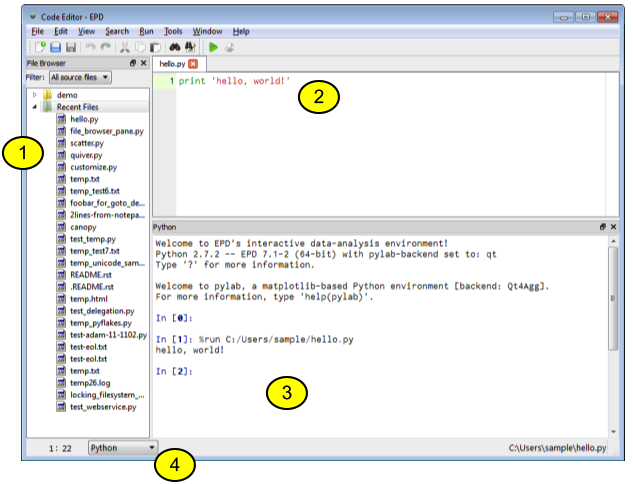

- #PYTHON TEXT EDITOR SOURCE CODE HOW TO#
- #PYTHON TEXT EDITOR SOURCE CODE PORTABLE#
- #PYTHON TEXT EDITOR SOURCE CODE CODE#
- #PYTHON TEXT EDITOR SOURCE CODE FREE#
Feel free to ask your valuable questions in the comments section below.
#PYTHON TEXT EDITOR SOURCE CODE CODE#
I hope you liked this article on Python Projects with source code solved and explained. So these were some very useful Python projects with source code for both a beginner and someone in advance level of Python. Use Your Phone Camera for Computer Vision.Encrypt and Decrypt Messages with Python.So if you are at that level now, you can work on all the advanced Python projects with source code mentioned below:
#PYTHON TEXT EDITOR SOURCE CODE HOW TO#
If you have learned the fundamental Python libraries and some of the external libraries, you should now know how to install external libraries and work with them.

I typed the line, stuff, into the editor.
#PYTHON TEXT EDITOR SOURCE CODE PORTABLE#
# Reopen the file to read the edited dataĬlick is a great library for command line processing and it has some utilities, click.edit() is portable and uses the EDITOR environment variable. # Flush the I/O buffer to make sure the data is written to the file # Write the initial content to the file I/O buffer With tempfile.NamedTemporaryFile(suffix=".tmp", delete=False) as tf: # We want to reopen the file incase the editor uses a swap-file. # NOTE: Don't autodelete the file on close! # Open a temporary file to communicate through (`tempfile` should avoid any filename conflicts) # Set initial input with which to populate the buffer # Get the text editor from the shell, otherwise default to Vim Including passing input to the editor and reading output from the editor. I wrote a small module named callvim.py (betraying my preferred choice of text editor) which creates a temporary file, populates it with some text, opens it with a text editor (defaults to vim), and prints the modified text: #!/usr/bin/env pythonĭemonstrates calling a text-editor (e.g. I wrote a small module named callvim.py (betraying my preferred choice of text editor) which creates a temporary file, populates it with some text, opens it with a text editor (defaults to vim), and prints the modified text: /usr/bin/env python - encoding: ascii - '''callvim.py Demonstrates calling a text-editor (e.g. Get the edited text back for use in the program It provides support for debugging, embedded Git control, syntax highlighting, IntelliSense code completion, snippets, and code refactoring.

You can add the extension to create a Python development environment. don't leave anything lying around after the program exits Visual Studio Code (VS Code) is a free and open-source code editor created by Microsoft that can be used for Python development. Regain control after the text editor exits FeaturesĬall a text editor from within a program in order to edit a file or buffer emacs, vim, etc.) into command-line Python programs. I'd like to know how integrate the use of text editors (e.g.


 0 kommentar(er)
0 kommentar(er)
